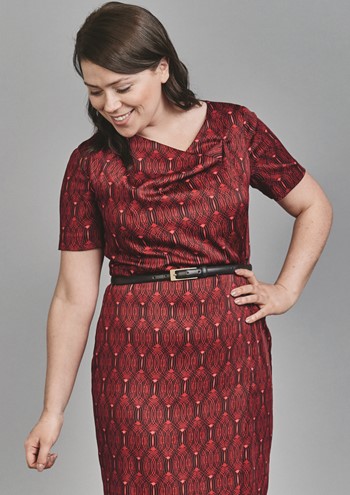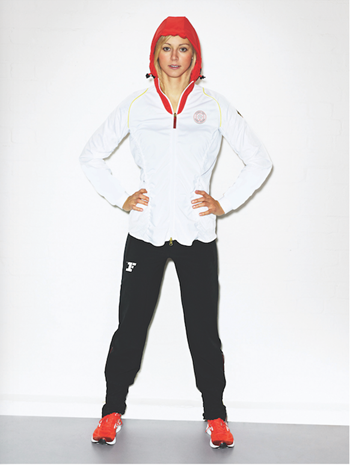Work and wear

When developing workwear for employees around the world, brands succeed most often when they gain insights and feedback from employees themselves. Amy Sandys reports on workplace uniforms
F rom early priests identifiable by dog collars, to the bright red uniforms of the 18th century British army, to the polo shirts and badges of the modern supermarket worker, uniforms instil a sense of belonging in organisations where employees are united around a common purpose. Yet with uniforms at once a brand’s most tangible touchpoint, and also key to establishing personal employee identity, the importance of staff contribution to decisions behind the uniform design process is being recognised by more brands.
External influences such as cultural norms or the surrounding environment are important – but how employees shape the brand culture through clothing is paramount to establishing brand identity and enhancing employee professionalism. When executed effectively, uniforms can instil trust in customers and see a return in terms of financial and repetitional success for the brand.
For many brands, development of staff uniforms are considered as a democratic process. An aspect of the workplace in which employee input is actively encouraged, it produces material, tangible results and can enhance employee happiness. Brand consultancy the Partners designed an updated uniform for listed northern English banking firm Yorkshire and Clydesdale Bank Group (CYBG).
The research and engagement process showed that employees wanted to retain the strong, heritage-driven identity which makes CYBG unique in a sector renowned for its uniform standardisation. Dave Roberts, executive brand director at the Partners, says, “We went through a process of interviewing staff to find out what they would want in new workwear. After consultation, we decided on an idea that would find its roots in both banks.” Differentiation was key; despite the banks belonging to the same parent company, each has a unique heritage which informs the sense of pride felt by its employees. Visually, this translated to the uniform’s fabric. Physically, it came down to a unique method of manufacture.
The Partners used a Glaswegian designer and a Yorkshire mill on the bespoke uniform range. Roberts says, “The designer, Aimee Kent, created prints based on the local areas, inspired by its history, architecture, landscape and culture. Clissold Mill, founded in Yorkshire in 1910 created two original fabrics, a registered tartan for Clydesdale Bank and a tweed for Yorkshire Bank.” The result was a uniform designed to be durable and withstand wear over a long period of time. It reflects the region’s vibrancy and reputation, with unique detailing reflecting the artisanal creation. Roberts adds, “The final materials were set off by small touches such as bespoke branded buttons and a care label that reads, ‘This clothing has been designed and developed with pride in the UK.’ This expression respects the brand’s past and embraces the future.”
Megan Reimer, uniform programme manager at Canadian budget airline WestJet, agrees that comfort and recognition are two defining features in the development of a successful branded uniform. Working in an industry in which staff are intrinsically mobile means comfort depends largely on the uniform’s flexibility. “Most of our WestJet employees work long days in their uniform, and are on their feet helping guests or hauling bags, so we want them to be comfortable and have pieces that work for their roles,” says Reimer. And feedback is equally important in the travel industry. “We also strive to take feedback into consideration and make changes when they tell us a piece isn’t working,” she says – an important consideration for a brand where around 10,000 employees wear one of just two uniform styles.
Despite the emphasis WestJet places on employee feedback, this presents a challenge in ensuring all body types, shapes, needs and comforts are catered for while retaining WestJet’s professional aesthetic. Ensuring the chosen uniform styles reflect the brand’s Canadian heritage is paramount for a national brand with an international reach. “Our goal is to design a uniform that is functional, professional, recognisable and authentically Canadian, just like us,” says Reimer.
By offering a variation in its two uniform styles, WestJet ensures the brand’s origin is consolidated across every possible touchpoint while handing employees the power to make informed, sensible decisions about the best uniform option for their jobs.
In some regions, however, flexibility in workplace uniform is less of a priority than cultural, social or environmental considerations. For Benjamin Fujita-Summers, creative partner at Dubai-based brand agency January, developing a professional uniform brand for leading Saudi Arabia pharmacy brand Nahdi presented a unique set of obstacles. In 2013, when the uniform was designed, Saudi Arabia had only recently passed legislation permitting women to work in the retail sector – Nahdi became a forerunner by permitting women in its shop floor operation. Lack of previous design and existing inspiration meant Fujita-Summers and global branding agency Landor, which led the overall visual identity overhaul for Nahdi, took a different, and somewhat unique, approach. “In a way, there was almost no research to do; it was more about knowledge of the market and what was acceptable at the time,” explains Fujita-Summers. For this project, external rather than internal influence drove the majority of decision-making behind the uniforms. “It’s more about what would be acceptable, about having that knowledge of Saudi Arabian culture and levels of acceptability,” he says.


Similarly, environmental factors can be important consideration for many brands developing staff uniforms, particularly those operating with heavy air conditioning, or in environments prone to climate extremes. When global gym chain FitnessFirst rebranded, developing a comfortable staff uniform was an instrumental part of generating a culture of collaboration and acceptance. Niall Cluley, former global HR director for FitnessFirst, led the the people strategy and cultural transformation of the brand during its overhaul. The challenge lay in ensuring employee comfort alongside a professional representation of the brand. “Everyone loved the original design concepts, but the practicalities of working in heavily air-conditioned areas alongside getting hands-on and active in supporting members took some time to get right.”
Like Nahdi, regional variations meant rolling the brand uniform out as a homogeneous design was not an option. “The cultural differences across 16 countries in the Middle East and in southeast Asia also took some time to work through,” says Cluley. “We only got this right when the project was handed over to local markets. While there is a clear logic to buy standard items globally using your scale it is essential to recognise how important local fashion and cultures.”
For Nahdi, the Saudi climate was less of a concern due to life occurring generally indoors. However, creating a uniform unique enough to differentiate its female employees from customers while retaining appropriate levels of social etiquette and anonymity underpinned the Nahdi uniform brand project. The basis of Nahdi’s female uniform was the abaya, a loose, traditionally black outer garment worn by many females across the Gulf, and particularly Saudi, region. The garment itself, a regular feature of everyday female dress, was considered conservative enough to pertain to the country’s strict female dress code. It was difficult to ensure Nahdi’s female staff could accurately represent a colourful brand, while wearing all black. “There was a trim to it which picked up some of the brand colours as well, although very subtle,” says Fujita-Summers. “There was a feature colour on sleeves which linked the colour-coded departments, and there was a feature colour stripe down the sleeves which linked the adviser to the department they were advising for.”
However, while Nahdi’s brand touchpoint familiarity extended to the inclusion of colours on the female uniform, personal familiarity – banned for unaccompanied women under Saudi law – also had to be addressed. Fujita-Summers says, “There was an interesting twist. The female staff had badges which badged them as their role and their expertise but didn’t carry their name – whereas male advisors could have their name. It’s saying, I can recognise that you’re a beauty advisor by the coding of your abaya and the fact you have it on your badge – but I don’t know your first name or your last name.”
Another consideration was ensuring Nahdi’s customers could distinguish female staff from female customers. In many pharmacies, such as the UK chain Boots or the pharmacy division of Walmart, the staff uniform is based on traditional chemist uniforms. Whether male or female, a white pharmaceutical coat signifies the pharmacist; similar uniforms are worn by counter and floor staff. At Nahdi, however, the need for its female employees to adhere to strict religious custom saw adjustments made to aid recognition for customers. This, says Fujita-Summers, was resolved by creating a custom charcoal-coloured abaya.
Through engaging employees in uniform design programs and giving the required consideration to cultural and religious factors, adjustments can be made to ensure workplace uniforms reflect brand culture from the inside out. By connecting staff on a tangible, professional level, a well-designed uniform can instil brand pride in the company while drawing customer attention to the most important values a brand is trying to portray.
For Roberts, the importance of a workplace uniform cannot be overstated, “Uniforms can play a part in any wider branding program. It delivers on the brand idea and reinforces the importance the company puts on its workforce. Too often clothing is not given the attention it deserves.” And, by allowing employees to give their uniform sufficient attention, a happier brand culture is created.
Reimer adds, “If [employees] are involved in the process, they typically gain a better understanding of how things are done, and want to wear their uniform with pride.” Engaging staff through their uniform decision making process might be the best investment a brand can make.












